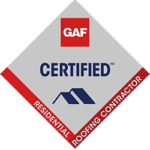How Often Should I Expect to Replace the Siding On My Minnesota Home?
As a homeowner in Minnesota, one of the pressing questions you might have is, “How often should I expect to replace the siding on my home?” This is an important question because the answer can significantly impact your home maintenance budget and schedule. The siding on your home not only contributes to the aesthetic appeal of your property but also plays a pivotal role in protecting it from harsh weather conditions, which are quite common in Minnesota.
Deciding on Siding Replacement
The type of siding replacement depends on a variety of factors including the type of material used, the quality of installation, and the severity of the local climate. In this blog post, we will delve into these factors, providing you with a comprehensive understanding of when and why you should consider replacing your home’s siding.
Understanding Different Siding Materials
When it comes to the longevity of your home’s siding, the type of material used is an important factor. Here are some common siding materials along with their estimated lifespan:
- Vinyl Siding: Vinyl is one of the most popular siding materials due to its affordability and durability. High-quality vinyl siding can last anywhere between 20 to 40 years if properly maintained. It’s resistant to common problems like pests and rot, but it can be damaged by severe weather or extreme heat.
- Wood Siding: Wood provides a classic look that many homeowners love. However, it requires regular maintenance to keep it in good shape. With proper care, wood siding can last 20 to 40 years. But without regular painting or staining, it can be susceptible to issues like rot and insect damage.
- Fiber Cement Siding: Fiber cement is a robust and low-maintenance option that can last up to 50 years. It’s resistant to many common siding problems, including rot, fire, and termites. However, it can be more expensive than other options.
- Metal Siding: Metal siding, commonly made from aluminum or steel, is incredibly durable. It’s resistant to many common siding issues and can last upwards of 40 years. However, it can be prone to dents and scratches.
- Brick or Stone Siding: Brick and stone are some of the most durable siding materials available. With minimal maintenance, these materials can last over 100 years. However, they are also among the most expensive siding options.
The type of siding material you choose will significantly influence how often you need to replace it. By understanding the pros, cons, and lifespans of different siding materials, you can make an informed decision for your home.
Recognizing Signs That Your Siding Needs Replacement
Regardless of the material used, it’s essential to inspect your siding for signs of damage or wear regularly. Early detection can save you from costly repairs down the line. Here are some key indicators that your siding might need replacement:
- Visible Damage: This could include cracks, holes, warping, or rot. These signs often indicate that your siding is no longer providing the protection your home needs.
- Higher Energy Bills: A sudden increase in your heating or cooling bills could signify that your siding isn’t insulating your home effectively.
- Interior Issues: Problems such as peeling wallpaper or loose drywall can indicate that moisture is seeping through your siding.
- Fading Color: Most siding is designed to hold its color for the majority of its lifespan. If your siding has faded, it may be nearing the end of its life.
- Mold, Mildew, or Fungus: If you notice any of these growing on or at the seams of your siding, it could mean water is penetrating it and potentially damaging the structure underneath.
Regular inspections and maintenance can extend the life of your siding. However, if you notice any of these signs, it might be time to consider replacing your siding to ensure your home remains well-protected against the elements.
Secure Your Home’s Future with A to Z Construction
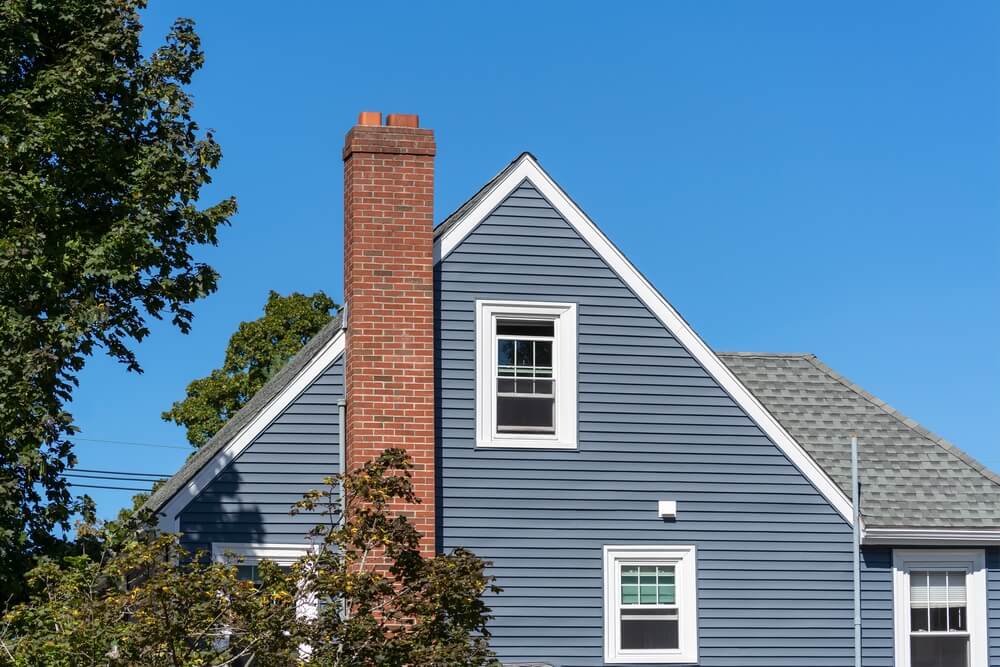
Our team of professionals can evaluate the condition of your current siding and guide you through the process of choosing and installing a new one that will withstand any weather and keep your home looking its best for years to come. Reach out to A to Z Construction today to learn more.
What Type of Siding Is Best Suited for Minnesota’s Climate?
Living in Minnesota, your home’s siding is subjected to various weather conditions, from blistering summers to freezing winters. Your home’s siding, serving as the first line of defense, is subjected to this broad range of weather conditions. It must bear the brunt of scorching sun rays, endure the harsh winter frosts, resist the heavy downpours, and hold strong against the forceful winds. Therefore, choosing the right siding material for your home becomes a crucial decision.
The Impact of Minnesota’s Climate on Your Home’s Siding
Living in Minnesota, your home’s siding is subjected to a broad range of weather conditions, from blistering summers to freezing winters. These extreme shifts can impact the lifespan of your siding.
- Winter and Snow: Minnesota is known for its harsh winters. Heavy snowfall can lead to moisture seeping into your siding, leading to rot, mold, or mildew. The freezing and thawing cycle can also cause siding materials to contract and expand, leading to cracks or damage over time.
- Summer and Heat: On the other end of the spectrum, Minnesota’s summers bring heat and humidity. High temperatures can cause some siding materials, like vinyl, to warp or buckle.
- Storms and Wind: Minnesota is also prone to severe storms, especially in the spring and fall. High winds can loosen siding panels, while hail can cause dents or even puncture holes in some materials.
The unique climate considerations in Minnesota mean that homeowners may need to replace their siding more frequently than in milder climates. It also underscores the importance of choosing a durable siding material that can withstand these extreme conditions. Regular inspections, particularly after severe weather events, can help catch potential issues early before they require major repairs or replacement.
Different Types of Siding
Selecting the right siding for homes in Minnesota is essential due to the state’s intense climate, characterized by severe winters and extreme temperatures. The ideal siding materials should be able to endure these conditions while adding aesthetic appeal to your home.
Brick, Metal, and Fiber Cement Siding
Brick, metal, and fiber cement are among the top siding materials for homes in Minnesota, thanks to their robustness and longevity. While these materials might come at a higher cost, they ensure excellent performance in harsh climates.
Homeowners have increasingly favored fiber cement because of its lasting durability and attractive appearance. It’s specifically designed to withstand the local climate, making it an environmentally friendly choice that stands up well to Minnesota’s weather.
Steel Siding
Steel siding is another formidable option, celebrated for its robustness. It can resist the most brutal winters, making it a reliable investment for Minnesota homes.
Engineered Wood Siding
Engineered wood is yet another durable option that can bear the brunt of harsh Minnesota winters. It’s resistant to warping and deterioration, proving to be a cost-effective and long-lasting choice. LP Smartside, a variant of engineered wood siding, is recommended for its combination of the warmth and beauty of wood with the durability and impact resistance of steel.
Wood Siding
Wood is a popular choice for cabin owners and those who value its natural beauty. It offers solid protection against winter weather and adds a unique aesthetic appeal.
Vinyl Siding
Lastly, vinyl siding is deemed a suitable material for Minnesota’s climate due to its resilience in extreme temperatures and outstanding durability. Its low-maintenance nature makes it a handy choice for homeowners.
Discover the Best Siding for Your Minnesota Home with A to Z Construction
Choosing the right siding for your Minnesota home doesn’t have to be a daunting task. With a wide range of durable and aesthetically pleasing materials available, you can easily find something that suits your specific needs and preferences. Whether you’re drawn to the robustness of steel, the charm of wood, or the resilience of vinyl, the perfect siding for your home is just a decision away.
Our team of experienced professionals is always ready to guide you through the process, ensuring you choose a siding material that not only enhances the beauty of your home but also stands up to Minnesota’s harsh weather conditions. So why wait? Contact A to Z Construction today and let’s turn your house into the perfect home you’ve always dreamed of!
What Are the Advantages & Disadvantages of Vinyl Siding?
Vinyl siding is a popular choice for homeowners who want a low-maintenance exterior. It is made from various colors and styles of PVC (polyvinyl chloride) resin. Vinyl siding has been around since the 1950s and has become increasingly popular due to its durability and affordability.
There are several advantages to using vinyl siding. First, it is very low-maintenance and requires no painting or staining. It is also resistant to rot, insect damage, and moisture, making it a great choice for homes in harsh weather conditions. Additionally, vinyl siding is available in various colors and styles so that homeowners can choose the perfect look for their homes. However, there are also some disadvantages, such as vinyl siding can crack or fade over time, and it may not be as environmentally friendly as other options.
What Is Vinyl Siding?
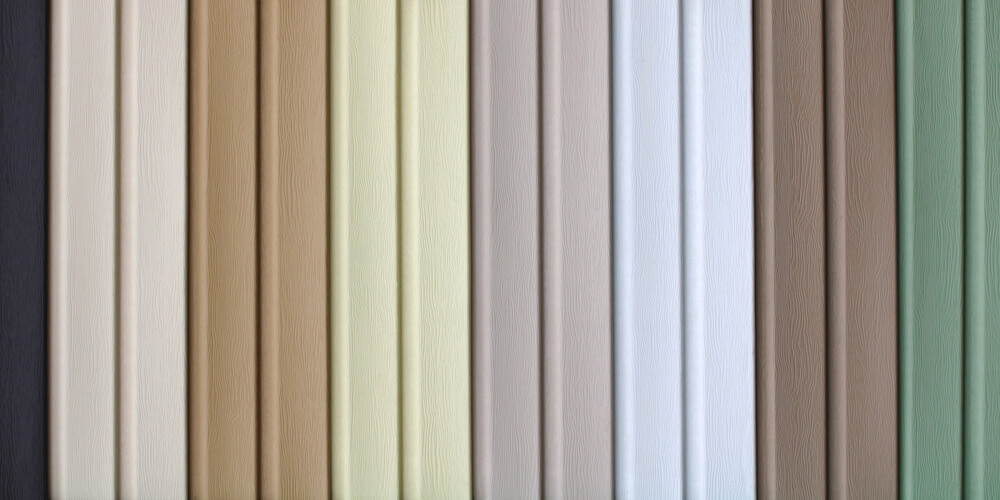
Vinyl siding is a popular exterior cladding material used in residential and commercial buildings. It is made from polyvinyl chloride (PVC) resin and other additives that provide durability, color, and texture. Vinyl siding is available in various colors, styles, and profiles, making it a versatile and affordable option for homeowners and builders.
One of the key advantages of vinyl siding is its low maintenance requirements. Unlike wood siding, vinyl siding does not need to be painted or stained regularly and is resistant to rot, insects, and moisture damage. Vinyl siding is also easy to clean with a hose and a mild detergent, making it an attractive choice for busy homeowners.
In addition to its low maintenance requirements, vinyl siding is relatively easy to install. It can be installed over most existing surfaces, including wood, brick, and stucco, and it does not require special tools or equipment. Vinyl siding is also lightweight and easy to handle, which can reduce installation time and labor costs.
However, there are also some disadvantages to vinyl siding. One of the main concerns is its environmental impact. Vinyl siding is made from non-renewable resources and can release toxic chemicals during manufacturing and disposal. Additionally, vinyl siding can fade and become brittle, especially in extreme weather conditions.
Overall, vinyl siding is a popular and affordable option for homeowners and builders who want a low-maintenance, durable, and versatile exterior cladding material. However, weighing the advantages and disadvantages before hiring a siding contractor is important.
Advantages of Vinyl Siding
Vinyl siding is a popular choice for homeowners due to its many advantages. Here are some key benefits of updating your home with vinyl siding.
Cost Effectiveness
One of the main advantages of vinyl siding is its affordability. Vinyl is less expensive than other siding materials, such as wood or brick, making it a cost-effective option for homeowners on a budget. Additionally, vinyl siding requires less maintenance than other materials, saving homeowners money in the long run.
Low Maintenance
Vinyl siding is low maintenance, another reason it is a popular choice for homeowners. Unlike wood or brick, vinyl siding does not require painting or staining, so it will not fade or peel over time. Additionally, vinyl is moisture-resistant, so it will not rot or warp like wood. This means homeowners do not have to worry about regular maintenance or siding repairs.
Durability
Vinyl siding is also durable and long-lasting. It can withstand extreme weather conditions that can cause storm damage, such as high winds, heavy rain, and hail, making it a good choice for homes in harsh climates. Additionally, vinyl siding is resistant to fading, cracking, and peeling, so it will maintain its appearance for many years.
Variety of Styles and Colors
Finally, vinyl siding offers various styles and colors, making it easy to find a look that fits your home’s aesthetic. Vinyl siding can be made to look like wood, stone, or other materials, so homeowners can achieve the look they want without the added cost or maintenance of those materials.
In summary, vinyl siding is a cost-effective, low-maintenance, durable, and versatile option for homeowners looking to update their home’s exterior.
Disadvantages of Vinyl Siding
Vinyl siding has many benefits, but it also has some disadvantages. Here are some of the most significant drawbacks of vinyl siding.
Environmental Concerns
Vinyl siding is made from PVC, a type of plastic. PVC is not biodegradable and can release harmful chemicals when it is burned. Additionally, the production of PVC requires a significant amount of energy, which contributes to greenhouse gas emissions.
Potential for Damage
Vinyl siding can be damaged by strong winds, hail, and other extreme weather conditions. If the siding is not installed correctly, it can also warp or buckle. Additionally, vinyl siding is not fire-resistant and can melt or burn if exposed to high temperatures.
Lower Resale Value
Vinyl siding is one of the most affordable types of siding, but it can also lower the resale value of a home. Some home buyers prefer more traditional siding materials like wood or brick, and may be less willing to pay a premium for a home with vinyl siding. Additionally, vinyl siding can fade over time, making a home look less attractive.
Overall, while vinyl siding has many benefits, it also has some drawbacks that homeowners should consider before deciding.
Is Vinyl Siding Right for Your Home?
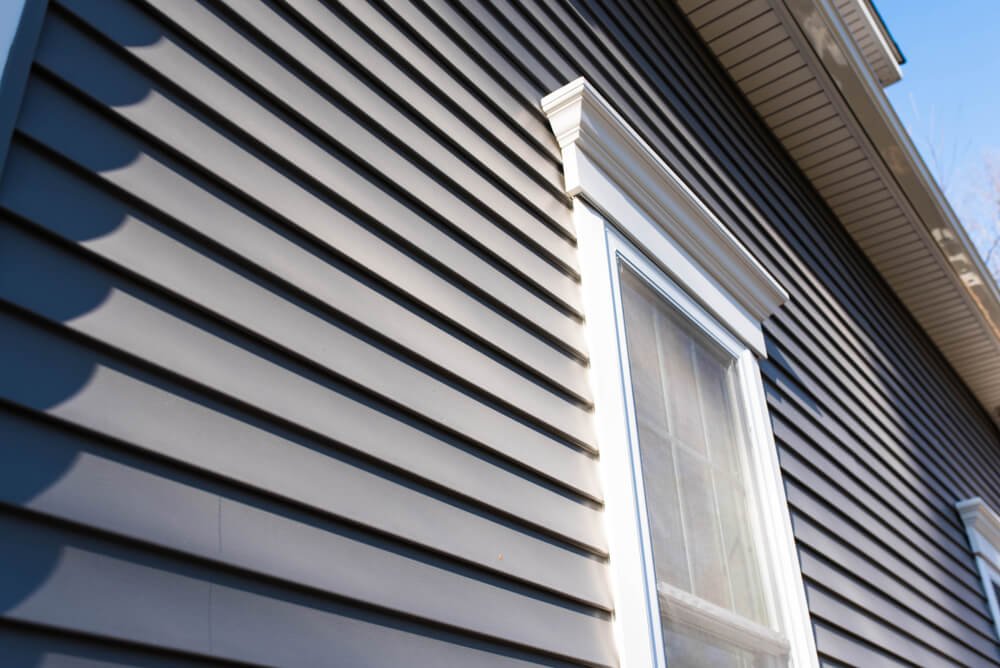
Vinyl siding has its advantages and disadvantages, and ultimately, the decision to use it will depend on the homeowner’s specific needs and preferences.
On the positive side, vinyl siding is relatively affordable, low-maintenance, and available in various colors and styles. It is also durable and can last for several decades with proper care. Additionally, vinyl siding can help improve a home’s energy efficiency by providing insulation and reducing heat loss.
However, there are also some potential drawbacks to using vinyl siding. For example, it can crack or fade over time and may not be as visually appealing as other materials, such as wood or brick. Additionally, vinyl siding can be prone to moisture damage if not installed correctly, and it may not be as environmentally friendly as some other options.
Overall, vinyl siding can be a good choice for homeowners looking for an affordable, low-maintenance option that will last for many years. However, those prioritizing aesthetics or environmental sustainability may want to consider other materials. Contact A to Z Construction today to learn about our vinyl siding options.
What Kind of Warranties Are Generally Available for Siding and Siding Installation?
Siding is essential to any home’s exterior, protecting it from the elements and providing an attractive appearance. When it comes to siding installation, homeowners want to ensure that their investment is protected. One way to do this is by choosing a siding contractor that offers a warranty on their work.
In addition to the manufacturer’s warranty, many siding contractors offer their own warranties on the installation work. These warranties can vary in length and coverage, so it’s important to read the fine print and understand what is and isn’t covered. Some warranties may only cover defects in workmanship, while others may cover damage caused by severe weather or other external factors.
Types of Siding Warranties
When it comes to siding, warranties are essential to protect your investment. Homeowners should be aware of three main types of siding warranties: manufacturer’s warranty, workmanship warranty, and materials warranty.
Manufacturer’s Warranty
A manufacturer’s warranty is a guarantee from the siding manufacturer that their product will be free from defects for a specified period. This warranty covers the replacement or repair of the siding if it fails due to manufacturing defects. The warranty length varies from manufacturer to manufacturer but typically ranges from 20 to 50 years.
It’s important to note that manufacturer’s warranties only cover defects in the siding itself. They do not cover damage caused by improper installation, weather, or accidents. Homeowners should carefully review the terms and conditions of the warranty to understand what is covered and what is not.
Workmanship Warranty
A workmanship warranty guarantees the siding contractor that their work will be free from defects for a specified period. This warranty covers the replacement or repair of the siding if it fails due to poor workmanship. The warranty length varies from contractor to contractor but typically ranges from 1 to 5 years.
It’s important to note that workmanship warranties only cover defects caused by the installation process. They do not cover damage caused by weather or accidents. Homeowners should carefully review the terms and conditions of the warranty to understand what is covered and what is not.
Materials Warranty
A materials warranty is a guarantee from the supplier of the siding materials that their product will be free from defects for a specified period. This warranty covers the replacement or repair of the siding if it fails due to manufacturing defects. The warranty length varies from supplier to supplier but typically ranges from 5 to 25 years.
It’s important to note that materials warranties only cover defects in the materials themselves. They do not cover damage caused by improper installation, weather, or accidents. Homeowners should carefully review the terms and conditions of the warranty to understand what is covered and what is not.
Understanding the different types of siding warranties is crucial when investing in new siding. Homeowners should carefully review the terms and conditions of each warranty to ensure that their investment is protected.
Understanding Siding Installation Warranties
When it comes to siding installation warranties, there are two types to consider: labor warranties and installation warranties. Both types of warranties can provide peace of mind and protect homeowners against potential issues that may arise after installing siding.
Labor Warranties
Labor warranties cover the workmanship of the installation crew. If any issues arise due to poor workmanship, such as gaps or improper installation, the labor warranty will cover the cost of repairs or replacement. Typically, labor warranties last one to two years after installation.
It’s important to note that labor warranties do not cover issues that arise due to material defects or damage caused by external factors, such as severe weather or accidents.
Installation Warranties
When it’s time for your siding to be replaced, it’s important to know that installation warranties cover the materials used in the installation process. If any issues arise due to material defects, such as warping or cracking, the installation warranty will cover the cost of repairs or replacement. Installation warranties can vary in length, but typically last for 10 to 25 years.
It’s important to read the details of the installation warranty carefully, as some warranties may only cover certain types of damage or have specific exclusions.
In addition to labor and installation warranties, some siding manufacturers may offer additional warranties for their products. These warranties can cover issues such as fading, chipping, or cracking and vary in length and coverage.
Overall, it’s important to carefully review all warranties and understand what is and is not covered. Homeowners should also work with reputable siding installation contractors and manufacturers to ensure that their warranties are valid and will provide the necessary coverage in the event of an issue.
Factors Affecting Siding Warranties
When it comes to siding warranties, a few factors can affect the length and coverage of the warranty. These factors include the material type, installation method, and geographical location.
Material Type
The type of siding material used can significantly impact the length and coverage of the warranty. For example, vinyl siding typically has a longer warranty than wood siding. This is because vinyl is a more durable and low-maintenance material that is less susceptible to damage from weather and pests.
Fiber cement siding and metal siding also tend to come with longer warranties than wood siding. However, it’s important to note that the specific warranty terms can vary depending on the manufacturer and the quality of the material used.
Installation Method
The installation method used for the siding can also affect the warranty. If the siding is not installed properly, it can lead to problems down the line that the warranty may not cover. For example, if the siding is not properly sealed, it can allow moisture to seep in and cause damage to the underlying structure of the home.
To ensure that the warranty remains valid, it’s important to have the siding installed by a professional who is experienced in the specific type of siding being used. This can help prevent installation issues that could void the warranty.
Geographical Location
The home’s geographical location can also impact the warranty on the siding. Homes in areas with extreme weather conditions, such as high winds, heavy rain, or harsh sunlight, may require more frequent maintenance and repairs than homes in milder climates.
As a result, manufacturers may offer different warranty terms for homes located in different regions. Homeowners should check with the manufacturer to see if there are any specific warranty terms based on their geographical location.
Overall, it’s important to carefully review the warranty terms for the siding before making a purchase. By understanding the factors affecting the warranty, homeowners can make an informed decision and ensure their investment is protected.
Understanding Types of Siding and Siding Installation Warranties
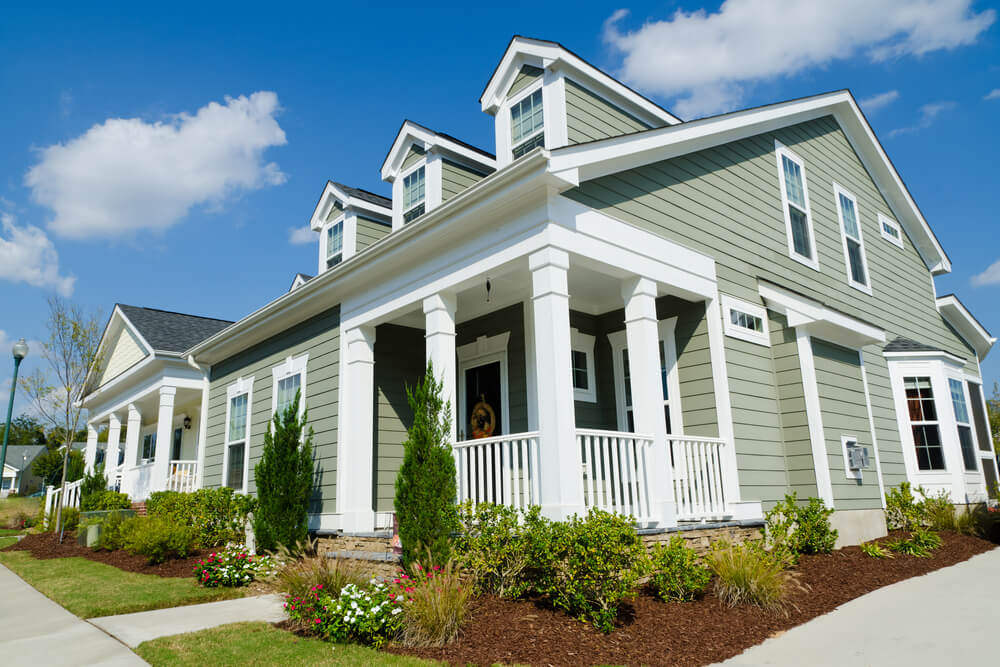
Several types of warranties are available for siding and siding installation. Homeowners should carefully review the warranty options provided by their siding contractor or manufacturer before making a final decision. Some key factors to consider when evaluating warranties include the warranty length, the coverage provided, and any limitations or exclusions that may apply. To learn more about siding and siding installation warranties, contact A to Z Construction today.







